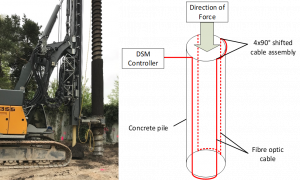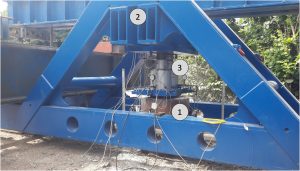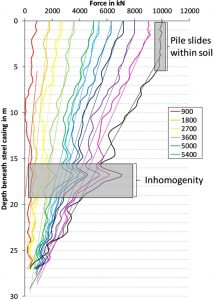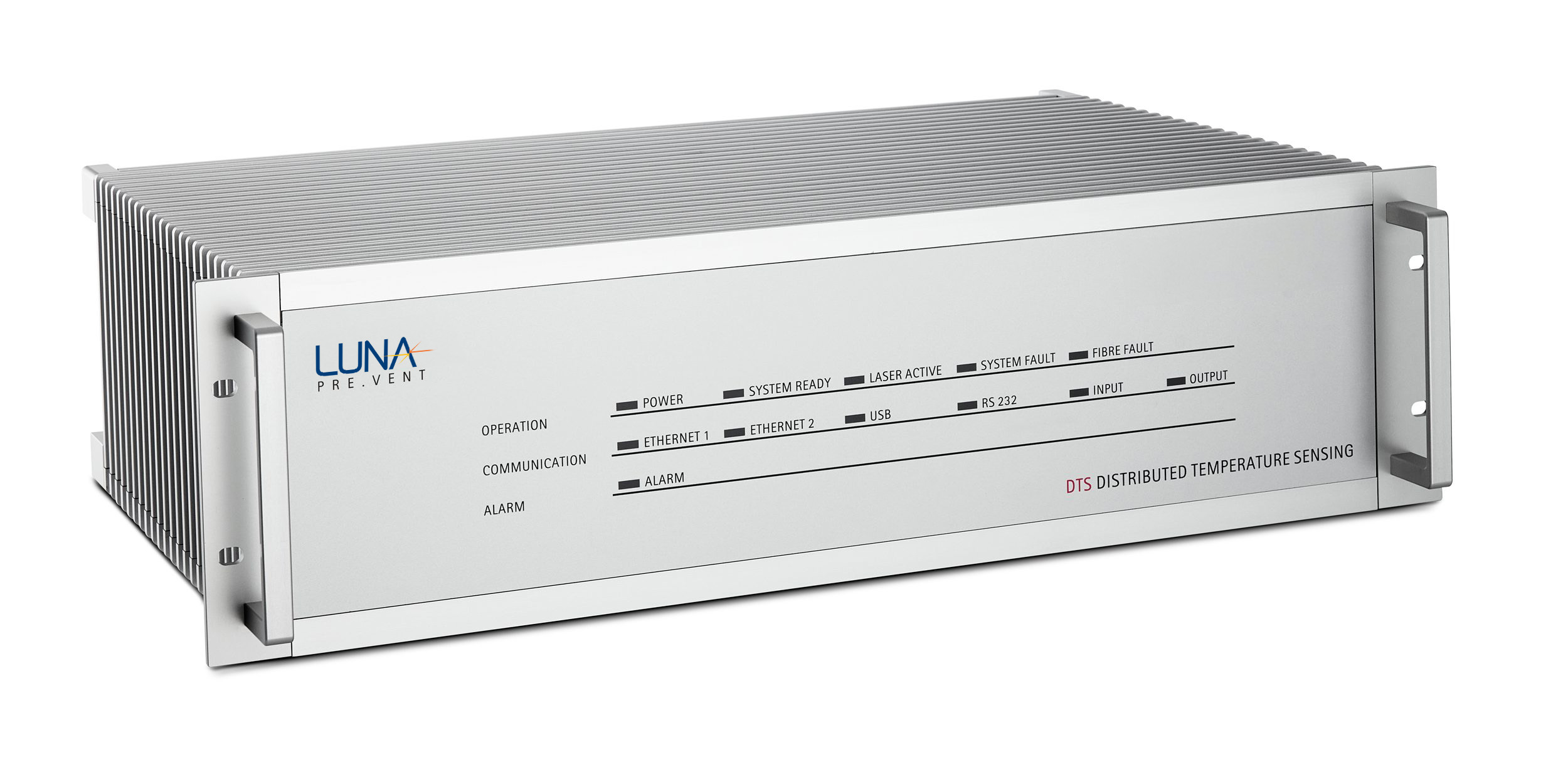Every day, more than 150,000 cars zoom by the German city of Hamburg on the busy A7 motorway. To avoid congestion and improve traffic flow, the A7 is being expanded from four to six – or even eight – lanes in the urban area of Hamburg Altona.
In Altona, the A7 is built on abutments. New abutments must be set up for the planned expansion. It is an important and complicated task to construct the foundation piles for the abutments and the new noise barriers. A lot of factors must be taken into consideration, such as soil type, wind pressure, static load, snow load, potential vehicle collision and more.
The company, Stump, has executed the load tests of the basement piles on behalf of the road construction company, DEGES, using a Distributed Strain Monitoring system from Luna Innovation’s LIOS Technology.
It is all about the foundation
It is important to know how stable the foundation piles are, and how much load they can handle. The load capacity is determined by dynamic or static load tests.
Traditionally, the load capacity is analyzed – using force gauges – at a few individual points, only. A more thorough load test method is to use optical fiber cables to measure the full strain distribution along the entire length of the pile – the Distributed Strain Measurement method (DSM).
DSM uses the Brillouin-scattering mechanism in an optical fiber to extract information about the strain along the fiber, giving the full picture instead of discrete measurements.

The piles are made from concrete filled reinforced iron cages. The optical fiber cable can easily be integrated into the piles by mounting them onto the reinforcement cage before the concrete is poured in.
The optical fiber cable had many advantages. It is cost-efficient, passive, robust, easy to handle and does not require any active components, such as transducers or sensors.
How to measure load capacity along a 30m pile?
In this case, we were at the construction site to analyze 30-meter-long piles, applying loads up to 10,000kN (corresponding to a 1,000,000 kg load).
The distributed strain analysis revealed important details that cannot be found by single point measurements. When measuring using a DSM system, we get a spatial resolution as low as 25cm.
We detected inhomogeneities in the strain levels along the length of the pile. Such inconsistencies may be caused by inhomogeneities in the composition of the concrete or other parameters related to the production process of the pile as well as to the uneven transfer of load to the surrounding soil.

Hydraulic pressurized cylinders (3) are placed on top of the pile (1). They press against a fixed structure (2) as shown in Fig. 2.
The full picture reveals inhomogeneities
Our distributed strain analysis revealed that at higher loads, the pile starts to slide within the ground.

Fig. 3 depicts the results of the DSM, showing the distribution of force over the entire length of the pile.
The measurements are based on a homogeneous elasticity of the pile material.
Without the DSM system, it would not have been possible to get all the information needed to reveal these inhomogeneities.
In conclusion, distributed strain monitoring using optical fiber cables has definite potential to become an efficient and reliable standard tool for proving the load capacity of foundation piles and to understand the causes of deviations from the designed load distribution.
The involved companies
Stump Spezialtiefbau GmbH is a highly specialized civil engineering company with more than 55 years’ experience in the areas of foundation engineering, securing, sealing and rehabilitation in difficult subsoil conditions. The company is a first mover within the use of fiber optic measurement technology in construction, their first use dates back as far as 1993. The last four years, their focus on establishing fiber optic measurement technology in special foundation engineering has increased significantly.
Luna Innovation’s LIOS Technology is the market leader in distributed optical strain and temperature sensing with more than 20 years’ experience and thousands of systems in the field worldwide. Passive optical fibers are used as distributed sensors because they are immune to vibration, electromagnetic noise, dust, cryogenic temperatures, and moisture. Everything made in Germany under ISO 9001 and 14001-certification.
References
Stefan BREUER, Wieland HILL, Rainer MACHEREY from NKT Photonics GmbH, Schanzenstraße 39, Building D10, 51519 Cologne, Germany and Karolina KOMLOSSY, Arne KINDLER from Stump Spezialtiefbau GmbH, Department for R&D, Valeska-Gert-Straße 1, 10243 Berlin, Germany: Distributed Strain Monitoring of Reinforced Concrete Foundation Piles during Load Tests
Kindler, A.; Grosswig, S. (2018) Distributed Strain Sensing in Geotechnial Engineering – a first standard for fiber optic strain measurements in geotechnical engineering in: Bautechnik 95, H. 5, S. 385-393
Kindler, A.; Grosswig, S.; Pfeiffer, T. (2018) Distributed Strain Sensing in Geotechnik – Teil 2 Ausschreibungstexte für ortsverteilte faseroptische Messungen in der Geotechnik in: Bautechnik 95, H. 9, S. 653-657

